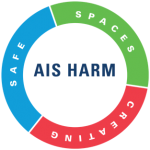The Aggressive Incidents Scale (AIS)

TechID
23-060
Inventors
G. Chaimowitz
M. Mamak
Contact
Noorisah Khan
Licensing Associate
Summary
The Aggressive Incidents Scale (AIS) is an advanced and user-friendly tool designed to accurately record, monitor, and analyze aggression and violence in patients by providing a common language for healthcare professionals. The AIS facilitates improved documentation of aggression and violence, promotes clear communication based on reliable documentation, informs, and evaluates interventions, enables monitoring of escalation, and fosters risk discussion.
The AIS consists of a weekly total grid and a calendar, enabling incidents to be recorded daily, with totals provided for each week and month. This approach creates a cumulative and graphic depiction of a patient’s aggression record, making it easier for professionals to interpret the level of aggression, identify patterns, and track improvement or escalation.
The AIS can be used independently or in conjunction with the Hamilton Anatomy of Risk Management (HARM), offering versatility in various healthcare settings. The AIS language features a two-part code: the first part is a scale (1-9) indicating the severity of the incident, while the second part is a letter representing staff intervention during the incident and the type of intervention employed.
Applications
- Hospital settings, including psychiatric and forensic units.
- Homecare services for patients with aggressive tendencies.
- Research organizations studying aggression and violence in patients.
- Universities for teaching and research purposes.
- Pharmaceutical companies for clinical trials and medication efficacy studies.
Advantages
- Standardized language for consistent documentation of aggression and violence.
- Improved communication among healthcare professionals.
- Informed and targeted interventions based on reliable data.
- Efficient monitoring of escalations and patterns in patient aggression.
- Enhanced risk assessment and management.
- Integration with electronic patient records and other risk management tools.
- Applicable across various healthcare settings and disciplines.

